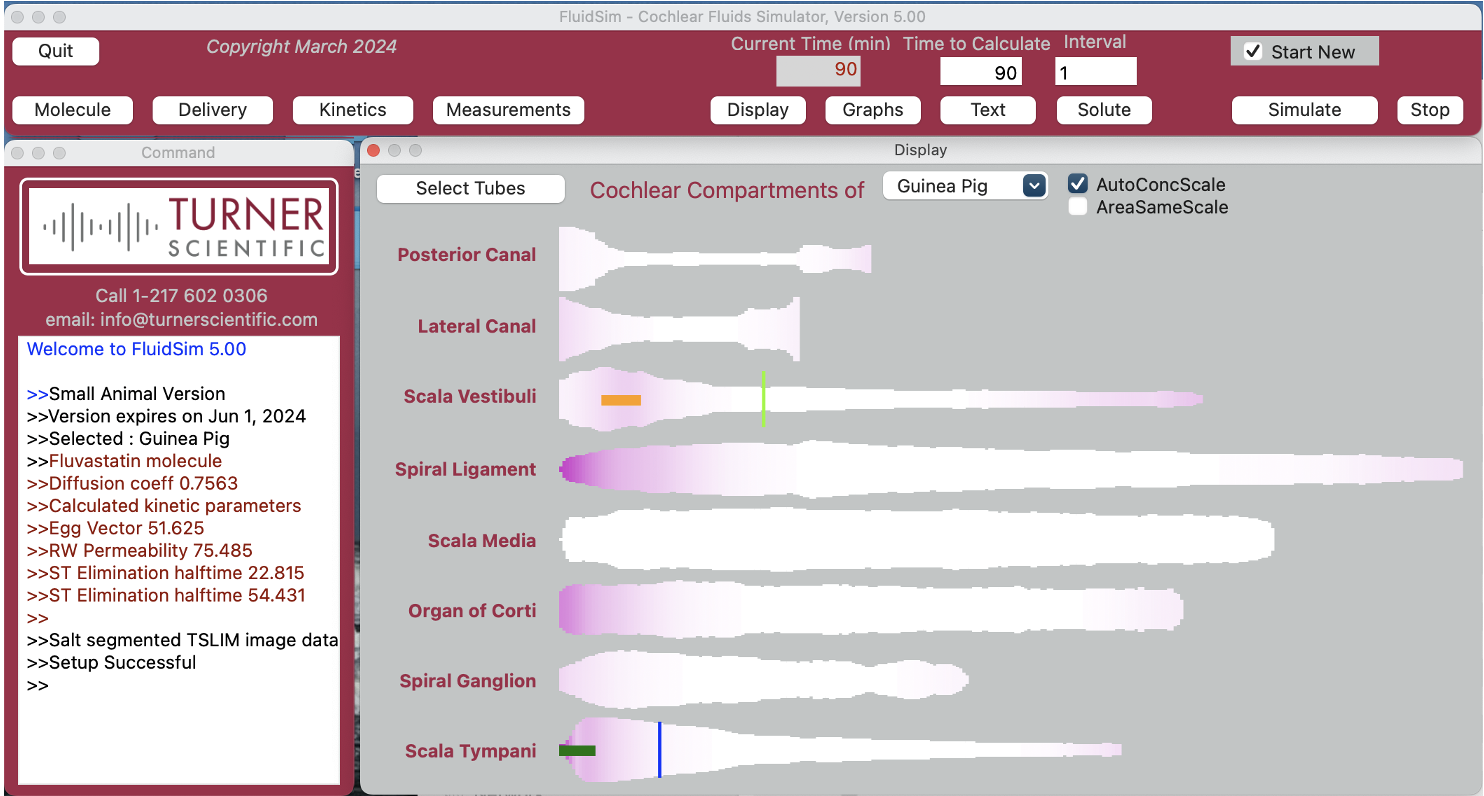We are interested in :-
1) Fluids of the Inner Ear, perilymph and endolymph.How they are maintained and regulated.
2) Barriers of the Inner Ear, controlling how substances enter, leave and distribute in the ear
3) Local Drug Delivery to the Inner Ear, optimizing methods to get drugs into the ear
4) Computer Simulations of Drug Distribution in the Ear, using the basic physics of how drugs spread
Illustrations on the top banner are:
(Left) This picture was our first ever 3D view of the inner ear's fluid spaces. It is from an experiment we did back in the 1980's. The perilymphatic spaces of a guinea pig inner ear were filled with orange latex and the endolymph spaces with dark blue latex. The bone surrounding the cochlea was then dissected away.
(Middle) Digital 3D reconstruction of the fluid spaces of the guinea pig ear generated from virtual slices obtained with an optical sectioning technique. Yellow:scala tympani; Green: scala vestibuli; Blue:endolymph; Cyan: round window; Brown: stapes. These data allow us to accurately quantify the dimensions of each of the fluid and tissue spaces of the ear for use in computer models.
(Right) A conventional mid-modiolar histologic section through the guinea pig ear, showing the membranous and cellular structures inside. The nerve is maroon and the bone is purple.

In 2021 the Salt Lab moved to Turner Scientific, a positive, exciting environment where we are working to bring new drug therapies for the ear from the lab to the clinic. For assistance with drug therapy of the ear, pharmacokinetic measurements, or computer simulations of drug distribution in the ear, talk to Turner.
Call Turner Scientific at: 1-217-602-0306 or Email: This email address is being protected from spambots. You need JavaScript enabled to view it.
The Turner Library (a work in progress)
A Collection of Educational Articles Relevant to Inner Ear Drug Delivery
1) Evaluation of Candidate Drugs for Local Delivery to the Ear
2) Direct Drug Injections into Perilymph *
3) Background Solutions for Drugs Injected into Perilymph *
4) Perilymph Sampling *
5) Dilution of Perilymph Samples for Storage and Analysis
6) How can the FluidSim Cochlear Fluids Simulator help me?
7) Toxicology Assessments for Hearing and Balance *
8) "Pipeline" Services Available from Turner
* indicates downloadable/printable/sharable pdf available
Inner Ear Fluids Simulation Program - Version 5

FluidSim simulates all drug delivery and perilymph sampling protocols used in the ear. The predictions are used to help design pharmacokinetic studies, saving unnecessary experiments and their associated cost. They are also used to interpret measurements and accurately replicate how drugs distribute along the ear with time. Simulations can be performed for the ears of 7 animal species, including guinea pigs, mice, rats, cats, sheep, domestic pigs, cynomolgus monkeys, and the human ear.
You either download the program for yourself or we can provide expert assistance and do the calculations for you. If you are interested in contracting with Turner to provide computer predictions or analysis of data you have already collected, contact This email address is being protected from spambots. You need JavaScript enabled to view it..
